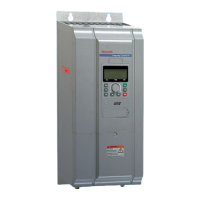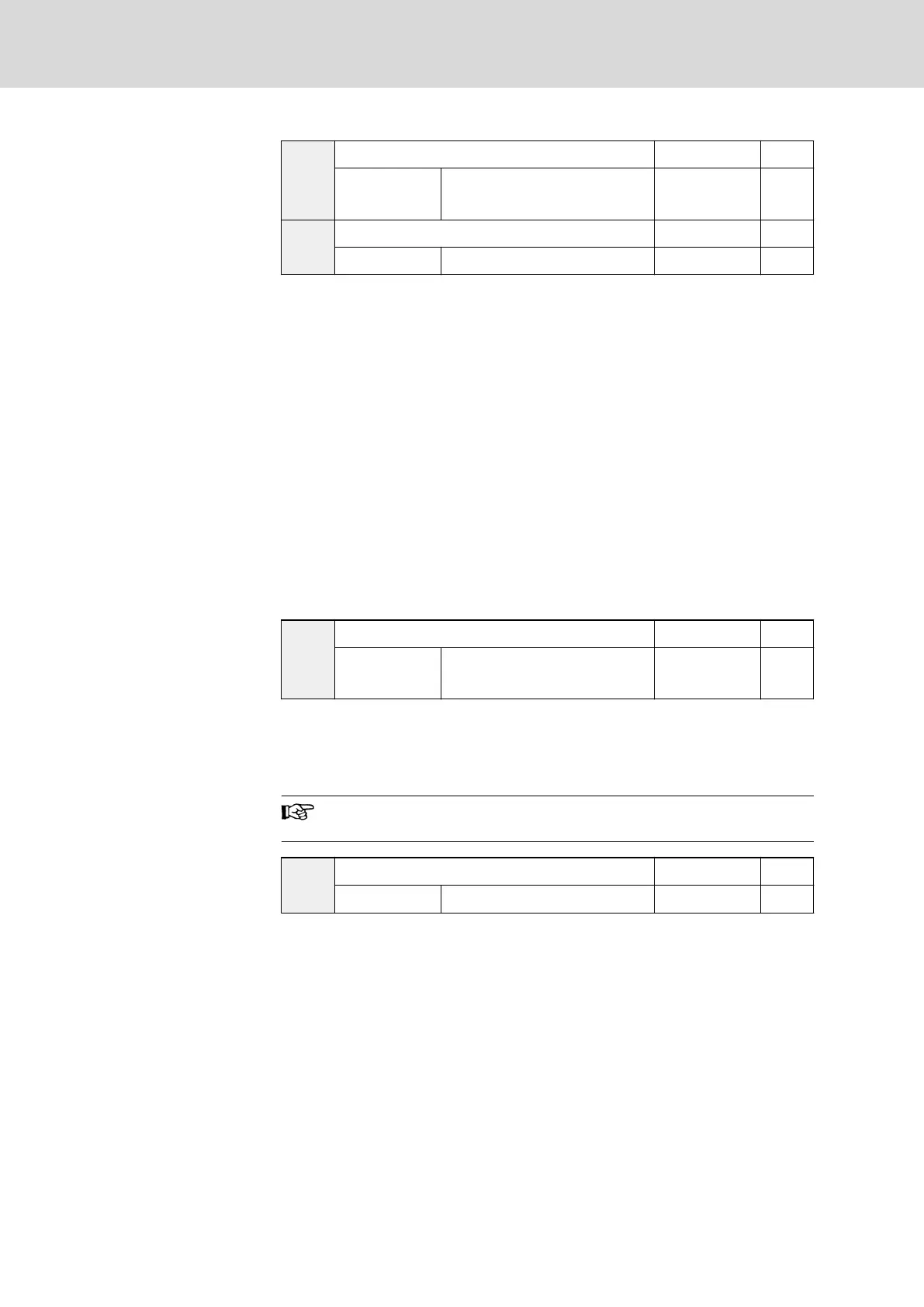E3.06
Td: Derivative time Factory default 0.00
Setting range
0.00...100.00 s
(0.00 represents no derivative)
Minimum unit 0.01
E3.07
T: Sampling period Factory default 0.50
Setting range 0.01...100.00 s Minimum unit 0.01
Used to set PID control parameters.
● P: Proportional gain
Used to eliminate deviation
– Larger P means larger scale and faster response, but too large P
leads to oscillation.
– P cannot eliminate deviation completely.
● Ti: Integral time
Used to eliminate remained deviation
– Smaller Ti means faster response of frequency converter to devia‐
tion changes, but too mall Ti leads to oscillation.
● Td: Derivative time
Used to respond fast to changes of deviation between reference and
feedback exists in the system.
– Larger Td means faster response, but too large Td leads to oscilla‐
tion.
E3.08
Deviation limit Factory default 2.0
Setting range
0.0...20.0 %
(of closed loop reference)
Minimum unit 0.1
Used to set the limit of the deviation between reference signals and feedback
signals to stop internal PID control and keep stable output.
● PID control stops when feedback deviation is within the range of ‘Devia‐
tion limit’ [E3.08].
Control accuracy and stability of the system should be taken into
account in setting of parameter ‘Deviation limit’ E3.08.
E3.09
PID adjustment mode Factory default 0
Setting range 0, 1 Minimum unit 1
In closed loop PID control, if the output value reaches parameter ‘Upper fre‐
quency’ [b1.06] or ‘Lower frequency’ [b1.07], the integral loop has two op‐
tions:
● 0: Stop integral adjustment
The integral value remains unchanged.
– When the difference between reference value and feedback value
changes, the integral value will change immediately with the
changing trend.
● 1: Continue integral adjustment
The integral value responds simultaneously to the difference change be‐
tween the reference value and the feedback value.
Bosch Rexroth AG DOK-RCON02-FV*********-IB08-EN-P152/259
Rexroth Frequency Converter Fv
Parameter Settings

